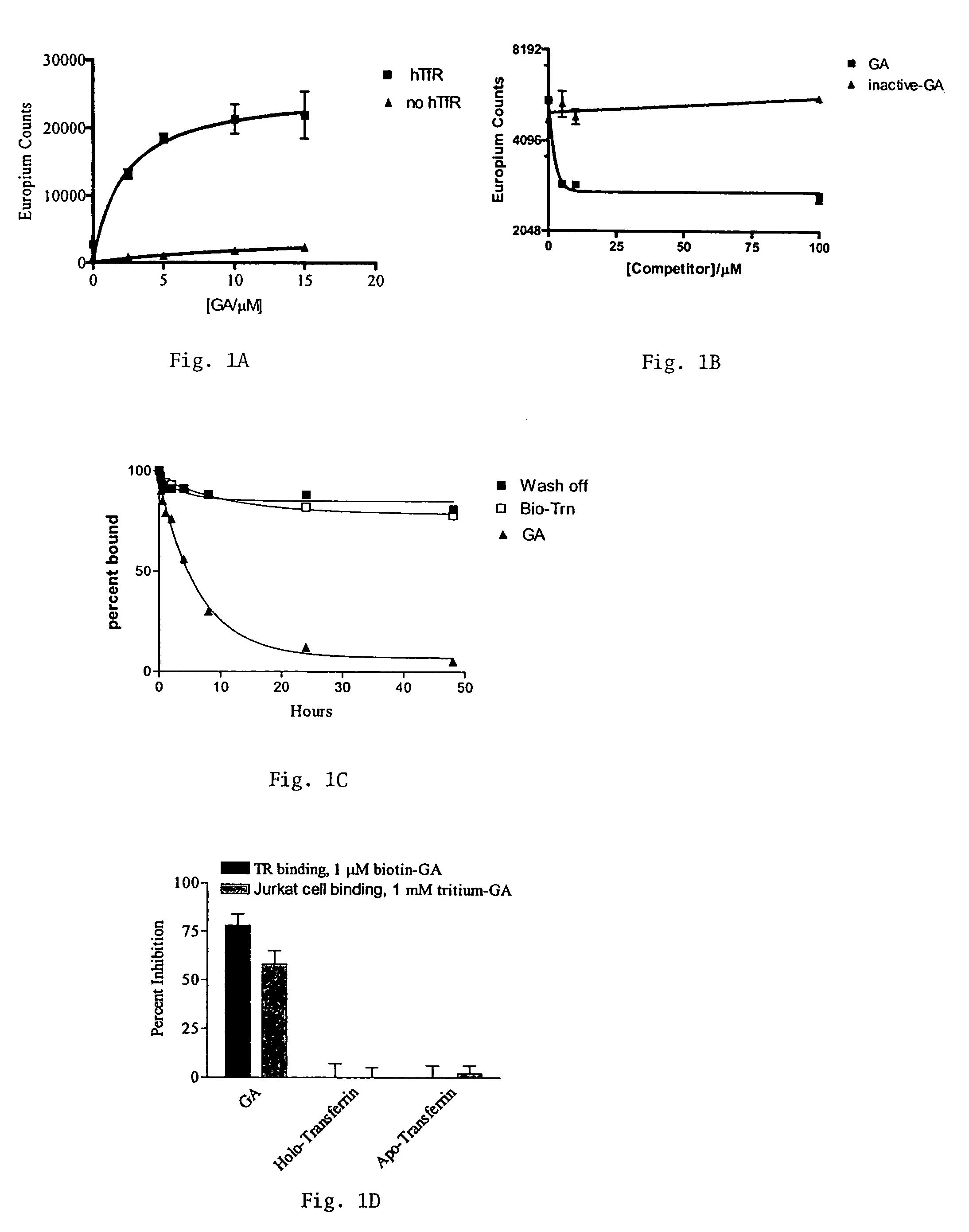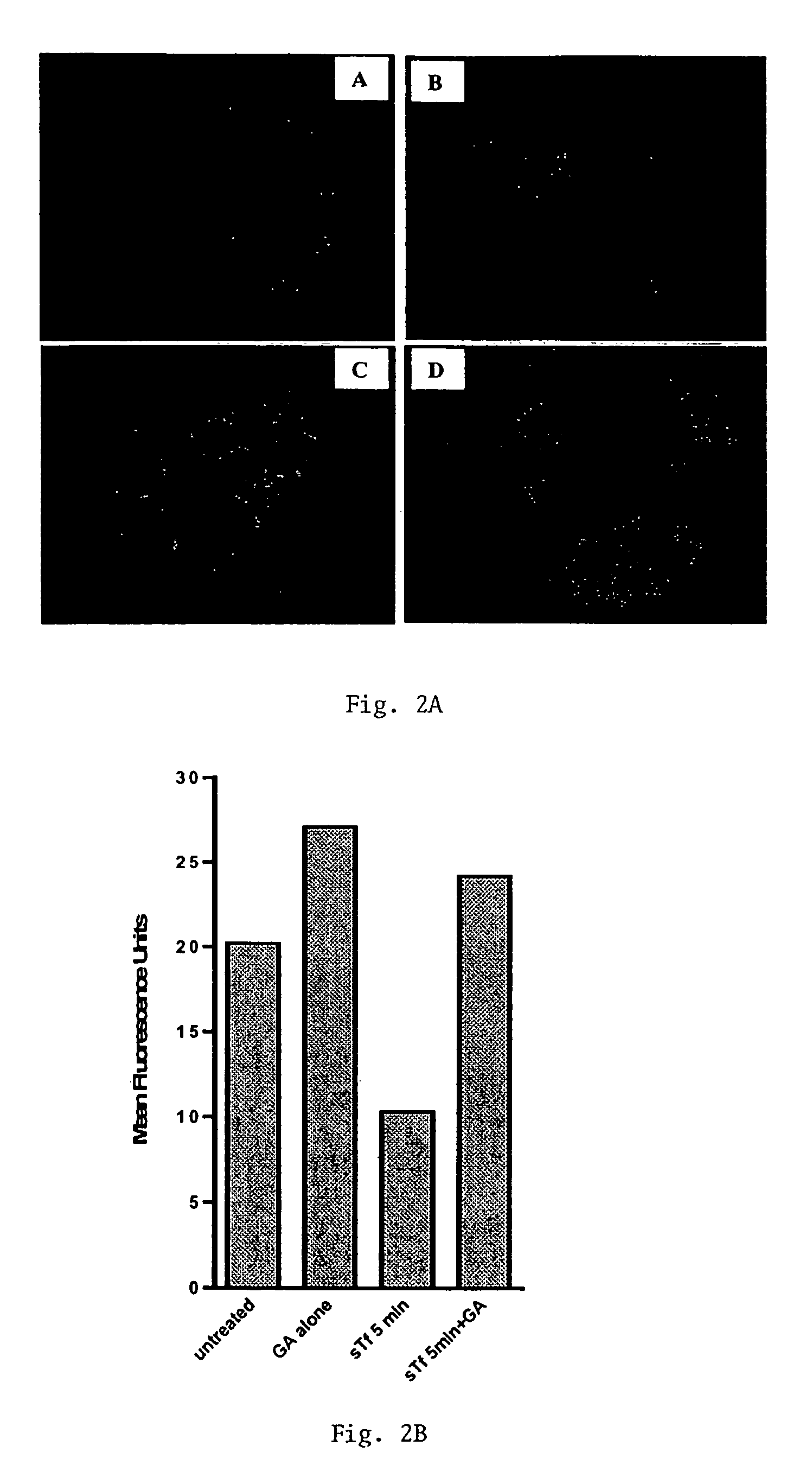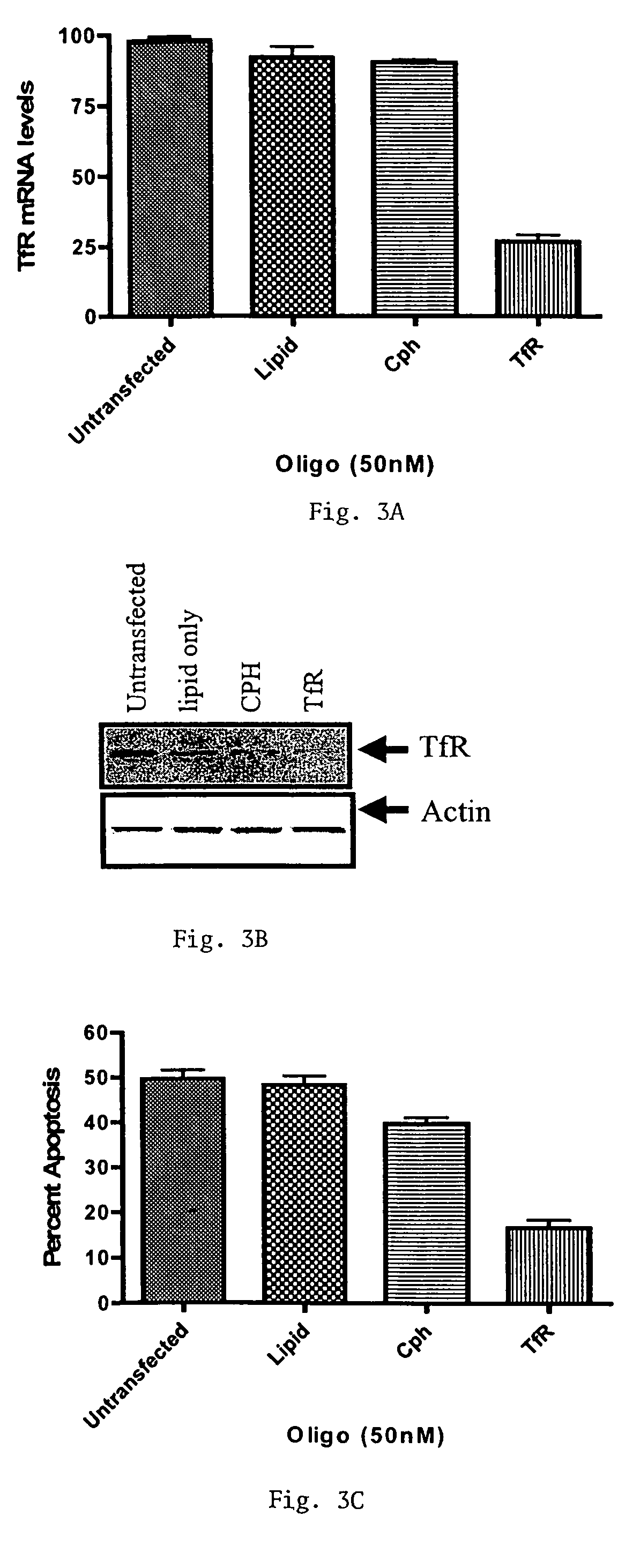Methods of treating diseases responsive to induction of apoptosis and screening assays
- Summary
- Abstract
- Description
- Claims
- Application Information
AI Technical Summary
Benefits of technology
Problems solved by technology
Method used
Image
Examples
example 1
N-(2-Gambogylaminoethyl)biotinamide
[0492]
Preparation of N-(2-Gambogylaminoethyl)biotinamide
[0493]A mixture of gambogic acid (85.6 mg, 0.136 mmol), DMAP (19.9 mg, 0.164 mmol), EDC (31.3 mg, 0.164 mmol) and N-(2-aminoethyl)biotinamide (Molecular Probes, 50 mg, 0.14 mmol) in DMF (5 mL) was stirred at room temperature for 72 h. The solution was poured into water (50 mL) and was extracted with ethyl acetate (3×10 mL). The combined organic layer was dried and concentrated to give crude product, which was purified by chromatography (SiO2, EtOAc / MeOH 4:1) to give the title compound (28 mg, 23%). 1H NMR (CDCl3): 12.92(s, 1H), 7.58 (d, J=6.9 Hz, 1H), 7.05-6.90 (m, 2H), 6.68(d, J=9.9 Hz, 1H), 6.15 (bs, 1H), 5.50 (d, J=10.5 Hz, 1H), 5.28 (m, 2H), 5.05 (m, 2H), 4.49 (m, 1H), 4.32 (m, 1H), 3.58-2.00 (m, 14H), 1.77 (bs, 3H), 1.73 (bs, 3H), 1.69 (bs, 6H), 1.65 (bs, 6H), 1.45 (bs, 3H), 1.29 (bs, 3H). MS: 919 (M+Na+), 897 (M+H+), 895 (M−H+).
example 2
N-[2-(2-{2-[2-(9,10-Dihydrogambogyl)aminoethoxy]-ethoxy}-ethoxy)-ethyl]-biotinamide
[0494]
Preparation of N-[2-(2-{2-[2-(9,10-Dihydrogambogyl)aminoethoxy]-ethoxy}-ethoxy)-ethyl]-biotinamide
[0495]A mixture of N-hydroxysuccinimidyl 9,10-dihydrogambogate (50 mg, 0.068 mmol), N-(2-{2-[2-(2-aminoethoxy)-ethoxy]-ethoxy}-ethyl)-biotinamide (Pierce, 28.8 mg, 0.068 mmol) in dichloromethane (3 mL) was stirred at room temperature for 4 days. The solvent was evaporated and the residue was purified by chromatography (SiO2, CH2Cl2 / MeOH 30:1) to give the title compound (11 mg, 16%). 1H NMR (CDCl3): 11.94 (s, 1H), 7.15 (bs, 1H), 6.66 (d, J=9.9 Hz, 1H), 6.50 (bs, 1H), 5.86 (t, J=6.90 Hz, 1H), 5.71 (bs, 1H), 5.46 (d, J=9.9 Hz, 1H), 5.18-4.90 (m, 2H), 4.51 (m, 1H), 4.33 (m, 1H), 1.94 (s, 3H), 1.73 (s, 3H), 1.68-1.64 (m, 9H), 1.36 (s, 3H), 1.32 (s, 3H), 1.12 (s, 3H). MS: 1032 (M+H), 1054 (M+Na+), 1030 (M−H), 1065 (M+Cl−1).
example 3
N-(2-{2-[2-(2-Gambogylaminoethoxy)-ethoxy]-ethoxy}-ethyl)-biotinamide
[0496]
Preparation of N-(2-{2-[2-(2-Gambogylaminoethoxy)-ethoxy]-ethoxy}-ethyl)-biotinamide
[0497]The title compound was prepared by a procedure similar to that of Example 2 from N-hydroxysuccinimidyl gambogate and N-(2-{2-[2-(2-aminoethoxy)-ethoxy]-ethoxy}-ethyl)-biotinamide (Pierce). Yield: 20%. 1H NMR (CDCl3): 13.0 (s, 1H), 7.67 (d, J=6.6 Hz, 1H), 6.80 (m, 1H), 6.78 (d, J=10.2 Hz, 1H), 5.58 (d, J=10.2 Hz, 1H), 5.15-5.10 (m, 2H), 4.30-4.10 (m, 10H), 3.70-3.15 (m, 3H), 3.00-1.20 (m, 56H). MS: 1029 (M+H), 1051(M+Na+).
PUM
| Property | Measurement | Unit |
|---|---|---|
| Fluorescence | aaaaa | aaaaa |
Abstract
Description
Claims
Application Information
 Login to View More
Login to View More - R&D
- Intellectual Property
- Life Sciences
- Materials
- Tech Scout
- Unparalleled Data Quality
- Higher Quality Content
- 60% Fewer Hallucinations
Browse by: Latest US Patents, China's latest patents, Technical Efficacy Thesaurus, Application Domain, Technology Topic, Popular Technical Reports.
© 2025 PatSnap. All rights reserved.Legal|Privacy policy|Modern Slavery Act Transparency Statement|Sitemap|About US| Contact US: help@patsnap.com



